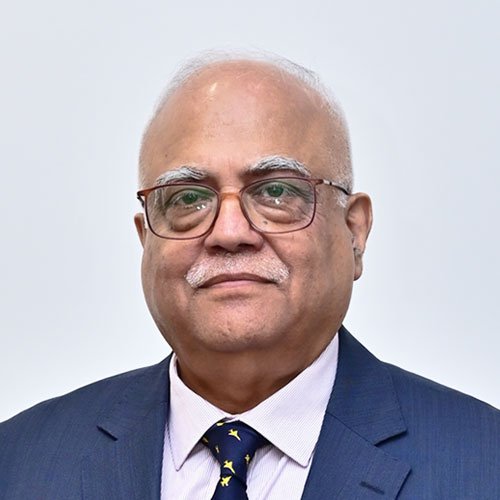Coping with Tech Race
Muhammad Haroon Shaukat
04 March 2025


The race for high technology and AI is accelerating, driven by both civilian and military applications. Nations and companies in the developed world and the Global South are investing heavily in futuristic technologies to revolutionise the industry, finance, healthcare, communications, and defence. Recently, a Chinese start-up DeepSeek AI shook the world and rattled Western stock markets. It has challenged the most advanced US-based OpenAI, at a fraction of the cost of its American rival. President Donald Trump called it a “wake-up call”. Forbes predicts that the US-based Nvidia, the single dominant provider of chips for AI, may lose that leadership position by 2030 to other competitors, including from China and emerging powers.
In the military domain, fast-improving drone technology has transformed aerial warfare. AI-assisted autonomous weapons and computing are reshaping modern warfare. A good example from the developing world is Turkiye, which has developed a game-changing and home-grown drone industry. Today, it has an indigenous supply chain for the production of advanced drones. These include TB2, TB3, Akinci, and Kizilelma stealth drones. Driven by the export of armed drones, Turkiye’s defence exports touched a record $5.5 billion in 2023, improving on the previous peak of $4.4 billion in 2022.
Rapid advancements in the domain of space have radically advanced dual-use communication and navigation systems. There have been monumental advancements in monitoring weather patterns, climate changes, and natural disasters. Military applications of space include surveillance, intelligence, reconnaissance, secure command and control, and precision weapon guidance systems. William J. Broad, in his recent article in the New York Times, asserts that new satellites called ‘eyes in the sky’ that orbit the earth at very low altitudes would snoop from the sky to take close-ups and leave nothing off limits.
In the developing world, several countries are investing heavily in innovative technologies, including AI, semiconductors, big data, and cyber security. AI applications are now impacting our everyday lives. Experts believe that in the next five years or so, AI advancements will usher in a new revolution. Pakistan too is striving hard to bridge the digital, technology, and development gap, despite persistent challenges.
In the recent past, the government has launched the “Science, Technology, and Engineering for Development” initiative, to harness the country’s technology and innovation potential. High importance is being attached to the transition to green and renewable energy, including substantially expanding hydroelectric capacity by building new dams to produce 18000 MWs during the “decade of dams”. The ecosystem for tech start-ups is blossoming. Pakistan has made advances in satellite technology.
In the area of defence, Pakistan Air Force, second to none, has taken a quantum leap by establishing a network of futuristic National Aerospace Science and Technology Park (s). NASTP is a project of strategic importance that brings together industry, academia, and the government, creating a niche technology ecosystem for design, development, and innovation relating to aerospace in the country. JF-17 Block III has enhanced the country’s air combat capabilities with cutting-edge avionics, AESA radar, and some stealth features. Similarly, the Shahpar drone, an indigenous UAV, marks progress in surveillance and tactical operations.
However, last year Pakistan ranked 91st among the 133 economies featured in the Global Innovation Index. There is a pressing need for essential institutional reforms and a special focus on a few priority areas to accelerate tech progress and enhance self-reliance. The foremost is the much-desired shift in Pakistan’s education system toward science and technology. It would require curriculum reform, integrating modern STEM education with a focus on critical thinking, and research. There is a need for creating smart classrooms and IT-equipped education tools.
The educators must also be equipped with advanced teaching methodologies and modern technological skills. Technology universities may be encouraged to have technology parks to facilitate applied research through academia and industry collaboration. The HEC and the Provincial governments have a huge responsibility to act with alacrity, wisdom, and foresight to lay strong foundations to build a knowledge-based ecosystem for learning.
In addition, investments in semiconductor fabrication, mobile and computer manufacturing, and chip design centres may be encouraged. Building upon the existing base, IT software development and exports have to be a priority. Strengthening skilled workforce training in precision engineering, robotics, and nanotechnology is crucial.
Despite varied and difficult challenges, Pakistan’s tech-savvy youth is its greatest asset for a technology-driven future. With a growing number of self-taught programmers, freelancers, and start-up founders, young Pakistanis are doing well in fields like software development, AI, and fintech. The rise of incubators, and global remote work opportunities have empowered them to innovate and compete internationally. If given the right support, through better education, investment, and infrastructure, this dynamic young population can drive Pakistan toward a thriving digital economy and a stronger presence in the global tech landscape.


The Centre for Aerospace & Security Studies (CASS) was established in July 2021 to inform policymakers and the public about issues related to aerospace and security from an independent, non-partisan and future-centric analytical lens.